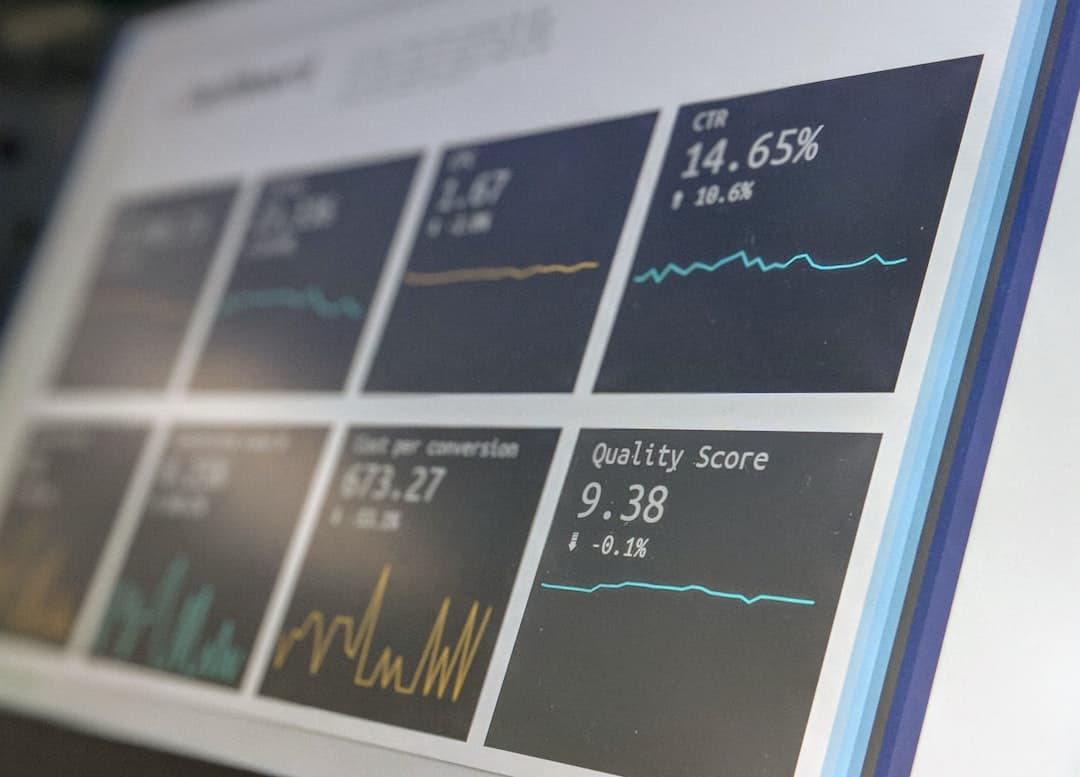What are best seo practice for content marketing?
Introduction: Why Content Marketing Matters for Small Businesses
The Crucial Role of SEO in Content Marketing
SEO sits at the heart of successful content marketing, powering visibility and discoverability for small businesses. When your content is optimized for search engines, you’re not just hoping an audience stumbles across your site—you’re strategically positioning your expertise where potential customers are already searching. SEO ensures that the time and effort you invest in blogs, guides, service pages, or product descriptions actually generate results rather than sitting unseen in the digital void.
For small business owners juggling daily responsibilities, SEO bridges the gap between your expertise and the market’s needs. By aligning each piece of content with real search queries and intent, you maximize organic reach and drive qualified leads to your site. In a competitive digital environment, relying solely on word-of-mouth or offline referrals doesn’t scale. Optimized content consistently attracts the right visitors, turning Google into your most reliable lead source.
Effective SEO doesn’t mean forcing keywords or chasing hacks. Instead, it’s about structuring information clearly, answering important questions, and building trust through authentic, helpful content. When done well, SEO-integrated content marketing not only reaches top search positions but engages readers, builds authority, and encourages action—fueling sustainable growth for your business without massive marketing spend.
The Time and Expertise Dilemma
Small business owners constantly face a tough choice: invest precious hours learning and executing content marketing, or risk falling behind competitors in the digital space. Most lack dedicated marketing staff, so every article, email, or social post takes time away from serving customers and managing operations. Even with a strong understanding of their own industry, the nuances of effective SEO, engaging writing, and publishing best practices can demand expertise that simply isn’t available in-house.
This time and expertise dilemma often leads to inconsistent publishing or abandoned content plans. Owners may start strong but quickly run into roadblocks—writer’s block, uncertainty about keyword research, or confusion over technical SEO elements like meta tags and internal linking. As a result, content fails to perform, and confidence in the entire process drops.
The most sustainable approach is to simplify and streamline content creation, focusing energy on delivering helpful information in areas where you excel. Outsourcing specialized tasks or adopting automated tools can relieve the burden, allowing you to produce professional, optimized content without neglecting core business activities. Prioritizing a realistic strategy keeps your marketing goals achievable and ensures ongoing progress, even when demands on your time intensify.
Understanding the Foundations of Effective Content Marketing
What Makes Content Work: Beyond Keywords
Content that earns trust and drives results does much more than target the right keywords. While using strategic terms is essential for visibility, true impact comes from relevance, clarity, and value. Today’s audiences—and search engines—gravitate toward content that answers real questions, offers practical solutions, and speaks in a genuine, knowledgeable voice. For small businesses, this means drawing on your unique experiences and insights in every piece you publish.
Consider what your ideal customer actually needs. Are they looking for clear instructions, expert perspective, or reassurance that your service is reliable? Content that works addresses these concerns head-on, using language your customers understand. Real-world examples, industry anecdotes, or “how-to” breakdowns can transform a basic article into a resource your audience returns to repeatedly.
Search engines now evaluate user engagement and satisfaction as ranking factors, not just keyword frequency. If visitors stay on your page longer, interact with your content, and find exactly what they came for, your content rises in authority. Therefore, prioritize depth over word count and usefulness over keyword saturation. Consistently offering solutions your target audience cares about is what sets high-performing content apart, positioning your business as a trusted authority in a crowded market.
Key Elements Every Piece of Content Should Have
Every effective piece of content shares several foundational elements that increase its impact and search visibility. First, every article or page needs a clear focus. Define the main topic and intent upfront, making it easy for readers and search engines to understand what you’re addressing. This focus should carry through the headline, introductory paragraphs, body text, and conclusion.
Second, structure is essential for readability. Use headings, subheadings, and bullet points to break up information, making it easy for time-strapped visitors to scan and find answers quickly. Each section should logically flow into the next, reducing friction that might cause readers to leave. Incorporate relevant keywords naturally within headers and body copy, but always prioritize clarity and user experience over keyword stuffing.
Finally, strong content integrates supporting elements that add credibility and encourage action. Include authoritative references, practical examples, or quick data points to back up your statements. End with a clear next step—whether it’s contacting you, reading a related article, or trying a recommended solution. Each of these elements works together to create content that not only ranks well in search results but genuinely helps your audience take action.
Top SEO Best Practices for Content Marketing Success
Comprehensive Keyword Research—Without the Overwhelm
Comprehensive keyword research forms the backbone of any successful content marketing strategy, but it doesn’t need to feel daunting or technical. Start by identifying the core services or products you offer and the questions your customers frequently ask. Tools like Google Search Console, Answer the Public, or even your own customer support emails can surface real-world phrases and concerns. Focus on locating a mix of primary keywords—broad terms that describe your main business—and secondary keywords—specific phrases, locations, or pain points that attract more targeted visitors.
Small business owners often worry that they need to master complex SEO software or pour hours into data analysis. In truth, effective keyword research is about discovering the intent behind what your audience is searching for. For example, a local plumbing service can combine high-volume keywords like “emergency plumber” with long-tail keywords such as “how to fix a leaky faucet at night” to capture both broad and niche search traffic. This blended approach helps your content reach prospects at different stages of the buying journey.
Instead of chasing the most popular keywords with the highest search competition, prioritize those that match your unique offerings and expertise. Even low-volume phrases can deliver strong results when they reflect your ideal customer’s needs. By focusing research on the questions, problems, and topics that matter to your clients, you sidestep overwhelm and create content that stands out—both to search engines and the people who need your services most.
Creating Value-Driven, Relevant Content
Creating value-driven, relevant content starts with a deep understanding of your target audience’s needs and challenges. It’s not enough to simply produce content for content’s sake; each article, guide, or resource must serve a clear purpose and bring tangible benefits to your readers. This means answering the questions your customers actually ask, solving their everyday problems, and sharing insights that help them succeed.
Start by talking to your customers or reviewing their feedback to identify the real pain points they experience. Then, craft content that provides step-by-step solutions, practical tips, or actionable answers. For example, a consulting firm might publish a checklist for first-time business owners or an e-commerce store could offer comparison guides that simplify purchase decisions. This targeted, helpful approach fosters trust and positions your brand as a helpful partner, not just a service provider.
In addition, value-driven content is always accurate, well-researched, and easy to understand. Avoid jargon or filler text. Use examples and scenarios your audience recognizes. Consistently delivering practical resources doesn’t just improve your SEO—it creates a deeper connection with your customers and encourages them to come back whenever they need information or support.
Optimizing On-Page Elements for Search Engines and Readers
Optimizing on-page elements is essential for both search engines and human readers to understand and value your content. Start by crafting clear, relevant titles that include your primary keyword near the beginning—this signals intent to search algorithms and grabs user attention in results. Next, write compelling meta descriptions that summarize the article’s value in one or two sentences. While not a direct ranking factor, meta descriptions heavily influence click-through rates.
Use header tags (H1, H2, H3) to organize content into logical sections. Each should accurately reflect the section’s content and, where possible, incorporate keywords naturally. This structure makes information digestible for your readers and helps search engines parse page relevance. Within the body, prioritize clarity and brevity. Use bullet points, numbered lists, or tables to present complex data or actionable steps efficiently.
Don’t overlook internal links to related posts or important service pages. These guide visitors to additional resources and create a strong site structure that supports SEO. Finally, optimize images with descriptive file names and alt text, ensuring they load quickly and provide accessibility benefits. Consistently applying these on-page practices improves user experience and boosts your chances of ranking for competitive keywords.
Internal and External Linking Strategies
Effective linking strategies drive both authority and user engagement in content marketing. Internal links connect your articles, guides, and service pages, guiding readers through related topics and encouraging them to spend more time on your website. For example, a blog post about time management for consultants can link to a detailed resource on productivity apps or a page detailing your consulting services. This structure not only helps users find valuable information but also signals to search engines how your site’s content fits together, enhancing overall SEO performance.
External linking, meanwhile, lends credibility and relevance to your content. By referencing reputable sources—such as industry reports, expert blogs, or government statistics—you back up your claims and provide extra value to readers. Choose sources that are trustworthy and directly related to the topic at hand. Limit the number of external links in each piece to maintain focus and avoid sending users away prematurely.
To make these strategies work, plan your internal linking as you map out content—identify cornerstone articles and ensure newer posts link back to them. Regularly audit older content to add links to your latest resources. Externally, only link where it enhances understanding, and always open links in a new tab to keep users on your site. Applied thoughtfully, both internal and external links strengthen your content’s impact and reinforce your website’s authority in the eyes of both search engines and your audience.
Consistency in Content Marketing: How to Stay Visible
Building a Realistic Content Calendar
A content calendar transforms content marketing from a sporadic effort into a predictable, manageable system. For small business owners balancing multiple responsibilities, a realistic calendar clarifies what needs to be published, when, and why. Instead of scrambling for topics or missing key opportunities, you can plan content around product launches, seasonal changes, or industry events that matter to your audience.
Start by setting achievable goals based on your actual resources. If writing an article a week is unrealistic, commit to a bi-weekly or monthly schedule that you can sustain. Choose core topics aligned with business priorities and customer interests. List key dates—such as holidays, local events, or business milestones—and schedule content to address them in advance. Incorporate a mix of formats, like quick how-to posts, client success stories, and in-depth guides, to keep your content fresh and engaging.
A well-structured content calendar also allows for flexibility. Track which content performs best, and adjust future topics or timing as you gather data. By mapping out your publishing schedule and pairing each piece with specific keywords and objectives, you maintain consistency without burning out. This approach ensures every post is intentional, strategic, and fully integrated with your overall marketing goals.
Leveraging Automation Without Losing Your Brand Voice
Automation has become a vital ally for small businesses looking to scale their content marketing without exhausting internal resources. However, many hesitate to adopt automated tools, worried about sacrificing the authentic tone that makes their brand unique. The solution isn’t choosing between efficiency and personality—it’s implementing automation that adapts to your established brand voice.
Begin by clearly defining your company’s tone, values, and messaging guidelines. Store sample phrases, preferred terminology, and signature storytelling techniques that reflect your identity. When automation platforms or AI writing assistants reference these details, they produce articles, FAQs, and social posts that sound consistent with your personality, rather than generated by a machine.
Regularly review automated content before publishing. Even advanced systems benefit from light human oversight—tweaking a phrase, inserting a local reference, or emphasizing key insights ensures your brand voice shines through. By balancing smart automation with hands-on refinement, small businesses can multiply their reach, maintain distinctiveness, and still deliver content that feels approachable and genuine to their audience.
Measuring Content Marketing Performance: What Really Matters
Key SEO Metrics for Small Businesses
Tracking the right SEO metrics helps small businesses measure the true impact of their content marketing and steer efforts in the right direction. Instead of getting lost in vanity metrics, focus on indicators that signal genuine progress toward your business objectives. Organic traffic is a prime metric—monitor how many visitors arrive from search engines, not just overall site visits. Rising organic traffic demonstrates that your content is gaining visibility and ranking for relevant searches.
Keyword rankings give you a snapshot of how well your targeted terms are performing over time. Tools like Google Search Console show which queries lead users to your site and how their positions shift after publishing new content. Pay particular attention to search terms that are directly related to your services or products, as steady improvement here often translates into higher quality leads.
Engagement metrics like time on page, bounce rate, and click-through rate (CTR) reveal whether your content satisfies users’ intent. If visitors stay longer and interact with your site, search engines recognize your authority and relevance. Finally, track conversions—form submissions, online bookings, or phone calls—that result from organic visits. These actions represent the ultimate validation of your content marketing strategy, proving that your SEO investments directly support real business growth.
How to Adapt Your Strategy Based on Data
Adapting your content marketing strategy based on data means making informed decisions instead of relying on assumptions or guesswork. Begin by regularly reviewing performance metrics such as organic traffic, keyword rankings, and user engagement for each published piece. Identify which topics or formats attract the most visitors and generate real interactions, like comments, shares, or conversions.
After gathering insights, adjust your future content plans. For instance, if your “how-to” guides have higher engagement than industry news updates, prioritize similar instructional content. If a topic consistently ranks on the second page of search results, revisit and update it—add new insights, improve clarity, or optimize on-page SEO elements like titles and meta descriptions. These data-driven updates can quickly lift content performance.
It’s also crucial to set periodic checkpoints—monthly or quarterly—to evaluate broader trends. Look for patterns in user behavior: Are certain posts driving more phone inquiries or completed contact forms? Is a specific keyword starting to gain traction? Use these findings to refine your keyword targets, revise underperforming articles, and allocate effort to channels and topics that deliver measurable results. This ongoing, data-based refinement ensures your strategy evolves with both your audience’s needs and search engine expectations.
Future-Proofing Your Content Marketing Strategy
Staying Ahead of SEO Trends and Algorithm Updates
Adapting to SEO trends and algorithm updates is essential if you want your content marketing to remain effective. Search engines continually refine how they interpret content, favoring user experience, expertise, and relevance over formulaic tactics. For small businesses, this means staying informed about changes that could influence your rankings, such as Google’s focus on helpful content, mobile usability, and page speed.
Monitoring trusted SEO news sources or tuning in to reliable industry blogs helps you spot significant shifts before they affect your website. However, it’s even more valuable to build flexible processes. Instead of reacting to every change, create content that meets long-standing best practices: prioritize clarity, craft well-structured articles, and answer real user questions. This evergreen approach means that even as algorithms evolve, your content maintains its value and visibility.
It’s also important to audit your website and update older posts in response to major updates. Refreshing outdated information, improving site performance, and optimizing for new devices keep your online presence current. By proactively adjusting your content marketing process, you don’t just keep pace with competitors—you set a higher standard and continue to grow your authority with every update.
Conclusion: Turning Content Marketing into a Growth Engine
Next Steps for Small Business Content Success
Turning content marketing into a lasting growth tool requires commitment far beyond a single blog post or campaign. Start by reviewing your current content assets and performance with a clear, objective eye. Identify what resonates most with your audience—whether it’s detailed guides, expert tips, or customer stories. Use these insights to prioritize topics and formats that deliver the best results.
Create a simple action plan outlining your next three to five pieces of content, tying each to specific business goals such as increasing inquiries, showcasing expertise, or supporting a new service launch. Assign deadlines that fit your schedule and stick to them. Even small steps, when repeated consistently, build momentum.
Finally, dedicate time each month to analyze your content’s impact. Review the SEO metrics that matter—organic traffic, rankings, and conversions—and adjust your approach where needed. This iterative mindset ensures your strategy evolves based on real-world feedback, maximizing both your reach and the return on your content marketing efforts.



